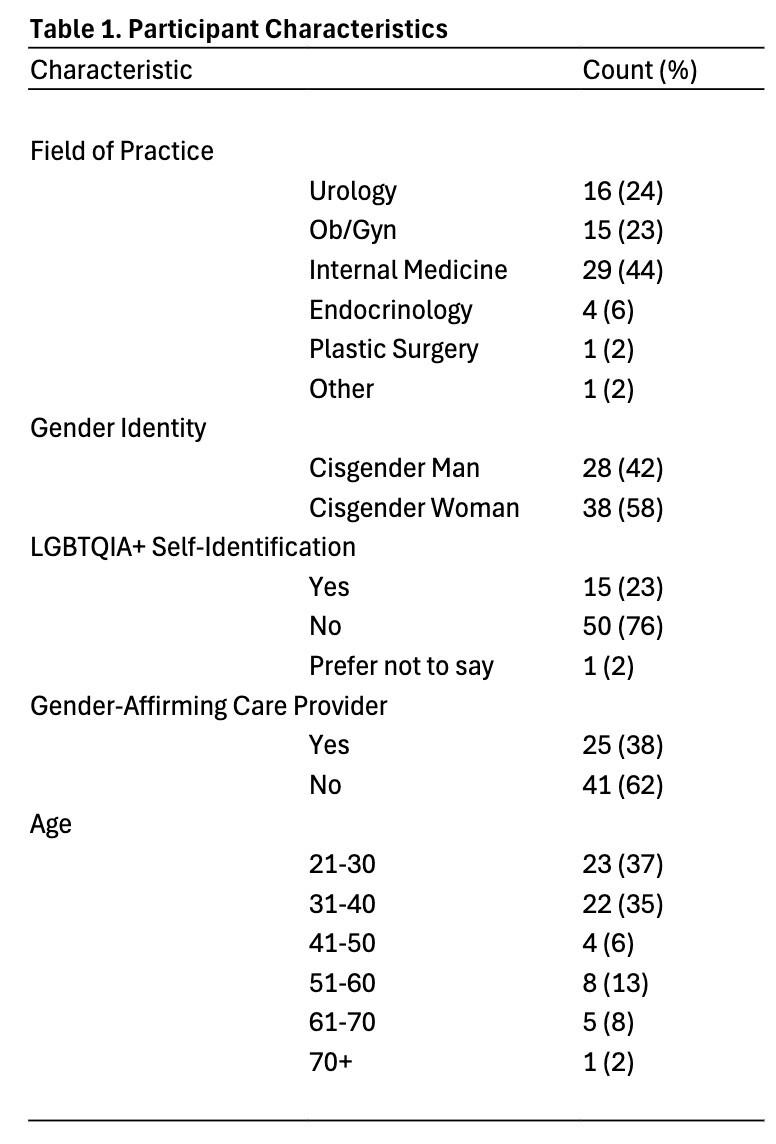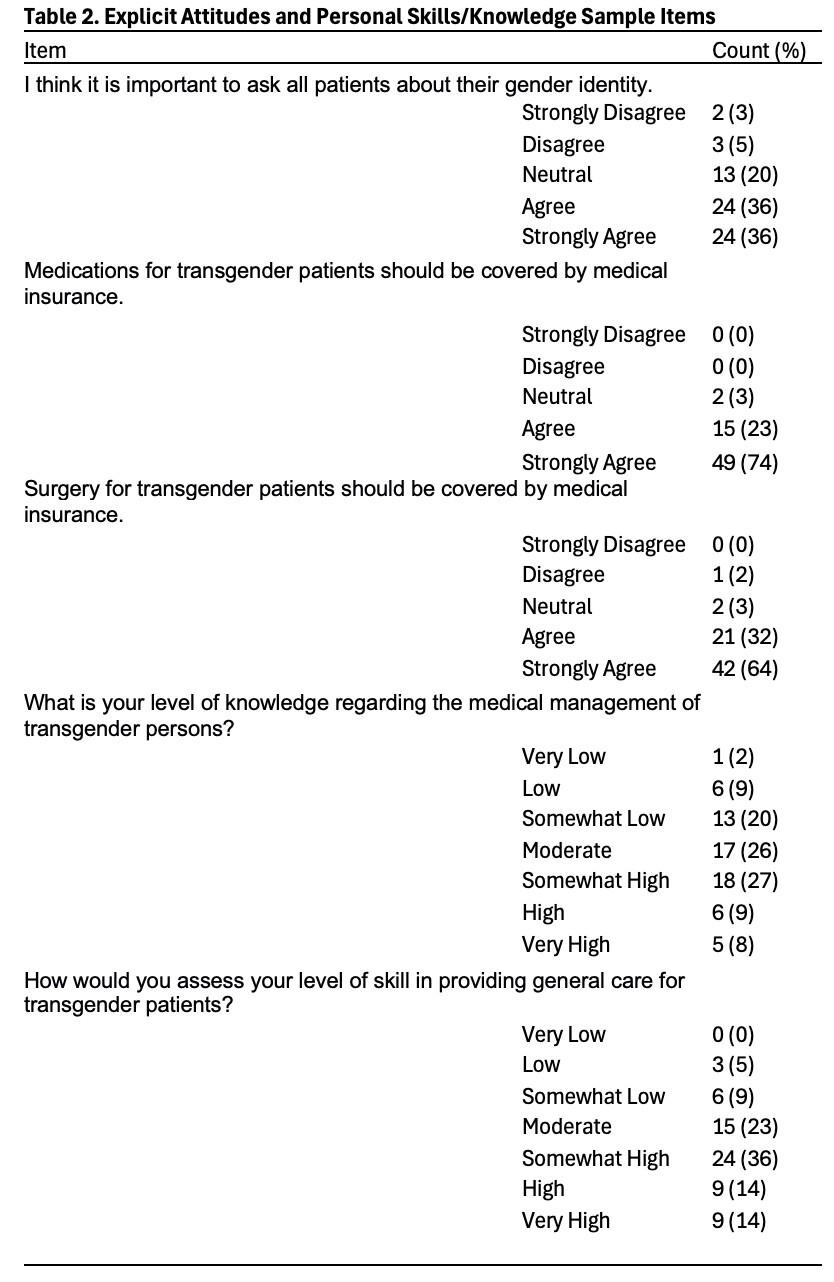Back to 2025 Abstracts
Do Reproductive Surgeons and Other Physicians Differentiate Anatomy and Gender Identity?
Andrew Shin, BS1, Jennifer Howell, PhD
2, Martin Kathrins, MD
3, Brian O'Shea, PhD
4, Alex Keuroghlian, MD
3, Bianca Hinojosa, PhD
5, William Meese, PhD
2, William Boysen, MD
3.
1Harvard Medical School, Boston, MA, USA,
2University of California, Merced, Merced, CA, USA,
3Mass General Brigham, Boston, MA, USA,
4University of Nottingham, Nottingham, United Kingdom,
5San Jose State University, San Jose, CA, USA.
BACKGROUND: Current guidelines for transgender and gender-diverse patient care emphasize distinguishing gender identity (GID) from anatomical inventory (ANIN), especially for reproductive surgeons performing gender-affirming surgeries. In these settings, phrases like “his vagina” or “her penis” foster inclusivity. However, physician implicit bias may potentiate misunderstandings regarding patient identity. This study assessed how well reproductive surgeons and other physicians differentiate GID from ANIN using the Implicit Association Test (IAT), a reaction-time test measuring automatic concept associations.
METHODS: We conducted an online survey via Project Implicit measuring implicit bias, explicit bias, physician demographics, attitudes toward transgender healthcare, and personal knowledge. The survey was emailed to Boston-area physicians. Each participant's IAT D-score, a composite value (-2 to +2) reflecting concept association strength, was calculated.
RESULTS: 66 physicians participated (Table 1), with a mean D-score of 1.03 (range 0.52-1.43), suggesting strong associations between male ANIN and male GID, and female ANIN and female GID. Linear regression showed that specializing in internal medicine predicted weaker ANIN-GID implicit associations (
t = -2.11,
p = 0.04). No significant relationships were found between D-score and other physician traits. Explicit self-reported bias was unrelated to physician characteristics. Self-reported transgender care knowledge and skills varied more than attitudes. Attitudes were largely positive (Table 2). Regression showed more experienced physicians felt more comfortable and knowledgeable in transgender healthcare.
CONCLUSION: Findings suggest reproductive surgeons and other physicians struggle to distinguish GID from ANIN, potentially affecting inclusive care. Further studies are needed to identify educational approaches to reduce implicit bias and improve inclusive care.


Back to 2025 Abstracts

